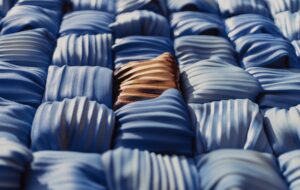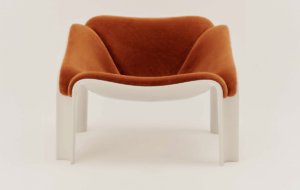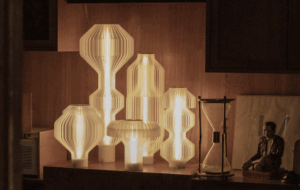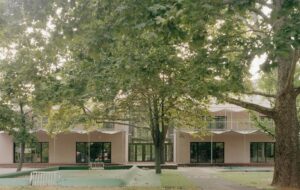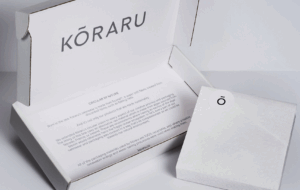|
|
||
|
While sculptor Martin Boyce was studying at the California Institute of Arts in the mid-1990s, he noticed something strange. The furniture around him was changing – not physically, but in its “soul”. Postmodernism had fallen from fashion, and the midcentury modernist revival was under way, with pieces by Jean Prouvé and Charles and Ray Eames in intense demand. “A lot of the work was being exhibited in furniture galleries and shown almost as sculpture,” says Boyce. “They were often shown without a tabletop, for example, to reveal the engineering and the form of the metalwork and so they were almost changing as objects. The stories of these objects were changing.” At the same time, furniture that was designed for mass production was becoming a niche product favoured by the rich. “It is kind of hilarious if you open up an interiors magazine or Elle Decoration and every kind of super rich person in the world has the same sort of furniture … The object itself sort of stays the same but somehow its kind of soul or its ideology has transformed through time and through its situation.” Thus Boyce, who has now been nominated for the Turner Prize, began a career-long interaction with modernist furniture. He takes the distinctive forms of Eames and Prouvé pieces and makes them his raw material. “It’s not a remake, not an exact remake but it is very recognisable, that’s what it is,” he says – the design is “filtered through me”. What emerges is troubled, fashioned in highly weathered galvanised steel. “It looks like it has been abandoned, left outside for a year or so … There’s rust on it.” On these neglected frame are partial tabletops, roughly etched with words and symbols in a runic typeface designed by Boyce. The tables are at once familiar and distant – they are amnesiac relics, “undead”, their meanings lost or distorted, new meanings imposed on them. This attempt to defamiliarise the familiar extends beyond the great works of the modernist canon to the more humble objects in the street. “It seems to be where my eye goes, unloved, misused or disused pockets of landscape,” Boyce says. “A lot of it is what you see from the train window or car window. These peculiar pieces of landscape … They appear to be waste ground but they have a park bench and a bin and a tree, so then it’s a park. Those moments and those objects that transform one place into another place; these things really fascinate me.”
credit Keith Hunter He lights his gallery spaces with curiously municipal concrete trees bearing fluorescent tubes, and deploys fencing materials to break up spaces. One object from a show in May, which will be used in the Turner exhibition, is three park benches, similar to the work of Prouvé or Perriand, upended on to their side and joined together to form a screen. “There’s rusted streaks running down it and it looks like an abandoned object. It is this idea of one thing becoming something else and that you are physically looking through an object, at the space beyond it and the objects beyond it.” The intent, he says, is to “make places, rather than things”. “The gallery space becomes a fragment of the landscape or fragments of different landscapes merged together,” a fragmentary, melancholy experience that might connect with his interest in fleeting views from passing trains or cars: “When you see things for a split second, they can often – to me certainly – appear quite beautiful, quite often because there is a lonely, isolated sense of abandonment.” The Turner Prize exhibition opens at the Baltic Centre for Contemporary Art in Gateshead on 21 October 2011
credit Keith Hunter |
Image Stefan Altenburger
Words William Wiles |
|
|
||







